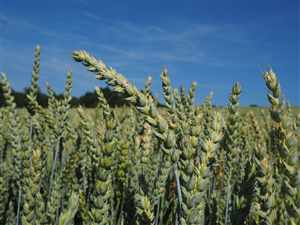Wheatgrass (Triticum aestivum)
Main Facts about Wheatgrass

Using Wheatgrass
Wheatgrass, due to its high chlorophyll content, stops the development of unfriendly bacteria, expels metals from the body, is beneficial for the lungs, normalizes red blood cell counts, and is good for body building and increasing energy. Wheatgrass juice contains many anti-aging ingredients such as super oxide dismutase (SOD), vitamins A, B complex, C, and E, chlorophyll, as well as a full spectrum of minerals, enzymes, and amino acids. Wheatgrass juice is antibacterial and can be used inside and outside the body. It’s probably the safest and most effective way to healthfully supplement your diet. High in oxygen, takes only minutes to digest, a superior detoxification agent. For weight reduction, Wheatgrass is potent at suppressing the appetite, raising the metabolism and circulation, and providing the body with concentrated nutrition. Weatgrass juice is gluten free.Wheatgrass is a remedy for: Weight loss
Cooking with Wheatgrass
Wheatgrass juice oxidizes very quickly and should be consumed within 2 minutes of juicing. It is available as fresh produce, tablets, frozen juice and powder.How to grow Wheatgrass
Wheatgrass can be grown indoors or outdoors. A common method for sprout production indoors is often on trays in a growth medium such as a potting mix. Leaves are harvested when they develop a "split" as another leaf emerges. These can then be cut off with scissors and allow a second crop of shoots to form. Sometimes a third cutting is possible, but may be tougher and have less sugars than the first. For growing outdoors, the preference is full sun, mesic to dry-mesic conditions, and soil containing loam or clay-loam. Some varieties of wheat (winter wheat) are planted during the fall, while other varieties (spring wheat) are planted during the spring.| Watercress |
Wild Yam
|